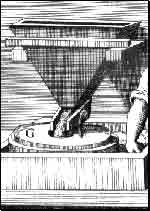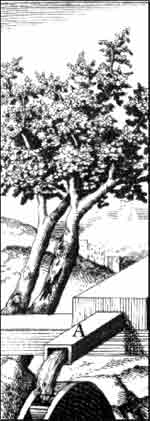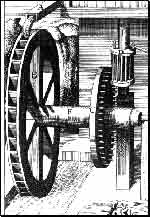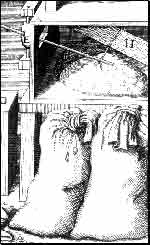Powder Flow I: Measuring Powder Flowability & Its Applications: A Hands-On Design-Oriented Workshop
Nashville, TN • Dec 8-9, 2014
This powder flow workshop should be of interest to those involved in powder processing issues for which powder flow properties are critical, including material transfer/handling, segregation, fluidized powder handling, feeding and filling operations, encapsulation, roll pressing and tabletting. The course is equally of interest to those involved in formulations, bulk drug production, or quality control, who wish to engineer or control powder flow properties to minimize handling problems or improve product quality. Typical participants include those from pharmaceutical processing, excipient and chemical manufacture, food and consumer product production, and a variety of advanced material processes.
Registration closes: November 17, 2014
Workshop navigation links below or to left:
Upcoming courses
Course venue
Supporting characterization vendors
What do others say?
Previous course participants
Course schedule
Fees, registration details, & contact information
Instructor
What is powder flow?
Automated shear cell testing
Consulting services
Contacts:
Registration, lodging & course content questions should be directed to: courses@powdernotes.com • Registration: 615.469.1342 • Fax: 240.524.8482
Additional details regarding conference center can be obtained at: www.evinsmill.com , Tel: 615.269.3740
Downloads:
Registration form: Registration form
Complete syllabus: E&G Powder School Syllabus
What is powder flow? PowderNote-PN1
In-house seminar (request quotation): Flow Seminar
Request an on-site equipment demonstration: Demo

Course venue
An intense 2-day powder flow & solids handling workshop conducted by E&G Associates, led by Dr.Bryan Ennis. Course content addresses powder flowability & process applications, shear cell measurements & supporting characterization methods, hopper design & material handling issues, fluidized behavior, segregation, implications for roll compaction & tabletting, and the impact of particle properties on bulk flowability.
As a unique pedagogical hands-on approach, participants are divided into small teams which directly measure flow properties by automated shear cell and fluidized-bed permeability cell for a supplied powder, and then apply the determined properties to their own hopper, feed rate, and compaction design problems. Thought provoking homework is supplied to elucidate key concepts and develop participant discussion.
Methodologies, measurements, and concepts presented are based on sound engineering principles (consistent with Process Analytical Technology efforts), drawing on the latest advances in powder mechanics & ASTM test methods (Section 19: Solids-Solids Processing (Solids Handling-8th ed.), Ennis (Section Editor) and Section 20: Size Enlargement (Powder Mechanics & Compaction-7th ed.), Ennis et al., Perry's Chemical Engineers' Handbook; ASTM Method: D 6682).
For questions & registration materials, please contact:
E&G Associates, courses@powdernotes.com
Tel: (615) 591-7510 • Fax: (240) 524-8482

What do others say?
“The flow of bulk solids is like electricity: a little knowledge is more dangerous than none. Fortunately, there are experts like Dr. Ennis who can steer engineers and scientists away from misguided assumptions and blind hypotheses and teach them to use the correct tools for measuring flow properties of solids. Unlike many courses in which only theory is taught, [this] course gives engineers hands-on experience with equipment and the opportunity to use the data to design vessels that ensure…flow of solids. I recommend his course to anyone interested in becoming an expert on the handling of bulk solids.” - Cabot Corporation
“Everyone was impressed with the speed, reproducibility and east of testing materials [with the automated rotary cell], especially those familiar with earlier Jenike cells. [This instrumentation] will be useful for evaluating formulations in terms of flow and compaction properties.” - Pharmacia Corporation
“All of the scientists…were impressed with your training session. The operator independence and reproducibility [of the instrumentation] make this technology a step ahead…, and enhances productivity.” - Pfizer Inc.
“I [have] attended a number of sessions…and training programs…on powder flowability. At the May show…the only session that I took home anything [from that] I could use was the session on…flowability testing by Bryan Ennis. It was clear that Dr. Ennis…[has] put a lot of work into course preparation and given thought to what could be important to those practicing in the field.” - Whitehurst Inc.
“This is an excellent course and I am recommending it to many of my colleagues. …people…have a tendency of installing powder handling equipment without knowing anything about the material they are handling. [Instead] I highly recommend the hands on workshop [as a better way] to accomplish this!…[ I found] your knowledge in the field of powder handling very refreshing.” - Eastman Kodak Co.

Previous course participants
Abbott, Actavis, Albemarle, Alkermes, Amgen, Anderson Co., Astra Zeneca, Biovail Technologies, Bristol-Myers Squibb, Boehringer-Ingelheim, Cabot, Dow, DuPont, Duracell, Eli Lilly & Co., Fauldings, FDA, FMC, Johnson & Johnson, Kodak, Kohler, InHale, Merck & Co., Mankind, Niro, Noveon, Novartis, Novopharm, Novozymes, PCS Phosphate, Pfizer, Pharmacia, Phelps Dodge, Procter & Gamble, Glatt Air, Glaxo Smith Kline, Roxane, Schering-Plough, Shire Pharmaceutical, Searle, Teva Pharmaceuticals, Transform Pharmaceuticals, Tyco Healthcare, Pharmacia, USP, US Steel, Vector, Warner Chilcott, Watson Pharmaceuticals, Wyeth, Wright Industries, & Xerox.

Course schedule
Evening arrival:
Arrival. Check-in 4:00 PM.
Reception & hors d'oeuvres 6:30 PM.
Dinner 7:30 PM.
Introductory evening presentation
Day 1: |
|
7:00 AM |
Breakfast |
8:00 AM |
Morning Lecture: |
10:30 |
Hand-on Session: |
12:00 |
Lunch |
1:00 PM |
Afternoon Lecture: |
2:00 |
Hand-on Session: |
4:00 |
Afternoon Break |
5:30 |
Dinner |
7:00 PM |
Evening Session: |
8:30 |
Evening hors d'oeuvres & social time (Lodge) |
Day 2: |
|
7:00 AM |
Breakfast |
8:00 AM |
Morning Lecture: |
9:00 |
Hand-on Session: |
12:00 |
Lunch |
1:00 PM |
Afternoon Lecture: |
3:00 PM |
Course conclusion |

Supporting characterization vendors:
(Previous presentations. Check back for final program.)
"The Sympatec Way of Laser Diffraction"
"The Sympatec Way of Image Analysis"
Helos™ laser diffraction demonstrations
Sympatec, Inc., Steve Morosky
www.sympatec.com • smorosky@sympatec.com
"Why measure engineering based material functions?
Perspectives drawn from powder technology practice"
iShear™ flow cell measurements
E&G Associates, Inc., Bryan Ennis, President
www.powdernotes.com • bryan.ennis@powdernotes.com
Solidsizer™ imaging demonstrations
J.M.Canty, Inc.
www.jmcanty.com • todc@jmcanty.com
top

![]()

Fees and registration details
Please note that registration is limited to 15 participants per course date. Course is also offered at regional locations on demand. Registation fee may be waived for outstanding students, with discretionary academic discounts for university staff. Direct requests to: scholarship@powdernotes.com.
Course fees: $1,450 + accommodations.
Registration form: Registration form
Complete syllabus: E&G Powder School Syllabus
Registration closes: Novembe 17, 2014
Registration, lodging & course content questions should be directed to: courses@powdernotes.com • Registration: 615.469.1342 • Fax: 240.524.8482
Additional details regarding conference center can be obtained at:www.evinsmill.com , Tel: 615.269.3740

Instructor
This course is led by Dr. Bryan Ennis, Section Editor, Section 19: Solids-Solids Processing, 8th Ed. (In Press), and Section 20: Size Reduction and Size Enlargement (w/Powder Mechanics & Compaction), 7th Ed., 1997, Perry's Chemical Engineers' Handbook, McGraw Hill; The Science and Engineering of Granulation Processes, Kluwer Academic Press, 2004, and Theory of Granulation: An Engineering Perspective, in Handbook of Pharmaceutical Granulation Technology, 2nd Ed., Mercel-Dekker, 2005. Dr. Ennis has consulted for nearly 100 clients – most Fortune 500 companies – including all major US pharmaceutical companies. He is a manufacturing consultant to the US Food and Drug Administration. He previously led granulation research & powder handling programs of the Particle Science & Technology Center of DuPont Engineering, served as an Adjunct Professor of Vanderbilt University, and is a faculty member of Chemical Engineering of the University of Tennessee at Chattangooga. He received his B.S. (Chemical Engineering) from Rensselaer Polytechnic Institute with a minor in Finance Economics & Ph.D. from The City College of New York. Dr. Ennis is a founder and previous Technical Vice-Chair of the Particle Technology Forum (PTF) and previous Chair of the Powder Technology Programming Group of the American Institute of Chemical Engineering (AIChE). His honors include two national awards from AIChE for service to the profession and founding of the PTF, previous member of the International Fine Particle Research Institute, Deutscher Akademischer Austausch Dienst Award (Germany), Stanley Katz Memorial Award (City College of NY), Visiting Research Fellow of Delft Technische Hogeschool (Netherlands) and the University of Surrey (UK). He is the author of several other invited contributions on particle processing, including presentations to National Science Foundation; Proceedings of the First International Particle Tech. Forum, (editor) AIChE, 1994; and "Particle Technology - The Legacy of Neglect in the US”, Chemical Engineering Progress, 1994. Dr. Ennis runs several continuing education courses in powder flow & handling, powder characterization, and granulation & compaction. He is also founder of iPowder Systems, an instrumentation firm specializing in mechanical property and surface characterization of powders.

What is powder flow?
Powder flow effects solids dosage operations through material handling problems, segregation, tablet uniformity, and fill control. But when we say a powder has poor flowability, what exactly are we really saying?
Consider packing sand in a cup to to make a tower for a sand castle. It is immediately obvious that powders ARE NOT fluids, as the tower does not collapse. Bulk powders are solids. Powders can withstand pressure and stress without flowing (or more correctly, yielding), in contrast with most liquids.
If you pack the sand tighter, your tower will be stronger. Powders have a yield strength – just as a solid – which is a function of the history of compaction stress, as well as the current applied stress. This is a powder’s flow function. Bulk powders DO NOT have a viscosity, except possible in a fluidized state. Simply forget most of the things you were taught about fluids, since they rarely apply to powders.
Lets’ think about measurements. You may have used torque rheometers to measure fluid viscosity. Could this work for a powder? There are some key requirements for rheometers: the fluid must not slip on the torque surfaces, the strain-rate field must be defined and the material functions of fluid must be known. Otherwise, you cannot determine a viscosity, and can only measure torque for an ill-defined stress field. This is useful for telling you the torque required to shear this fluid IN THIS VESSEL and FOR THIS GEOMETRY. It tells you nothing about shear forces or flow in an actual process. Furthermore, attempting to extend traditional rheometric testing to bulk solids simply doesn’t work – since bulk powders are generally not fluids.
Bulk powders are solids. They exhibit anisotropic stress, elastic deformation & yield strength. They DO NOT flow in the sense of a fluid. They fail along slip planes, often don’t exhibit shear gradients, can slip on wall surfaces, and are less sensitive to strain rate. Their flow properties are measured by shear cells, developed from geotechnical soil mechanics.
Downloads:
What exactly is powder flowability? PowderNote-PN1
In-house seminar (request quotation): Flow Seminar

Automated shear cell testing
Shear cells determine simple flow indices, which are measures of the forces required to initiate flow, defined as powder failure, based on measurements of cohesive strength, powder friction, and wall friction. This information is extremely useful for bin design, minimization of caking & segregation, and processes such as filling operations, roll pressing, tabletting, and encapsulation.
For more information see: iPowder Systems
Request an on-site equipment demonstration: Demo
Download information on the iShear split-cell rotary shear tester: iShear Rotary Shear Tester

Consulting services
E&G Associates has considerable consulting experience in support of granulation and compaction processes, as well as surrounding material handling issues, relying heavily on powder characterization of relevant formulation properties. Contact directly if such needs arise.
For more information see: E&G Associates
Email us for further inquiries: Email
